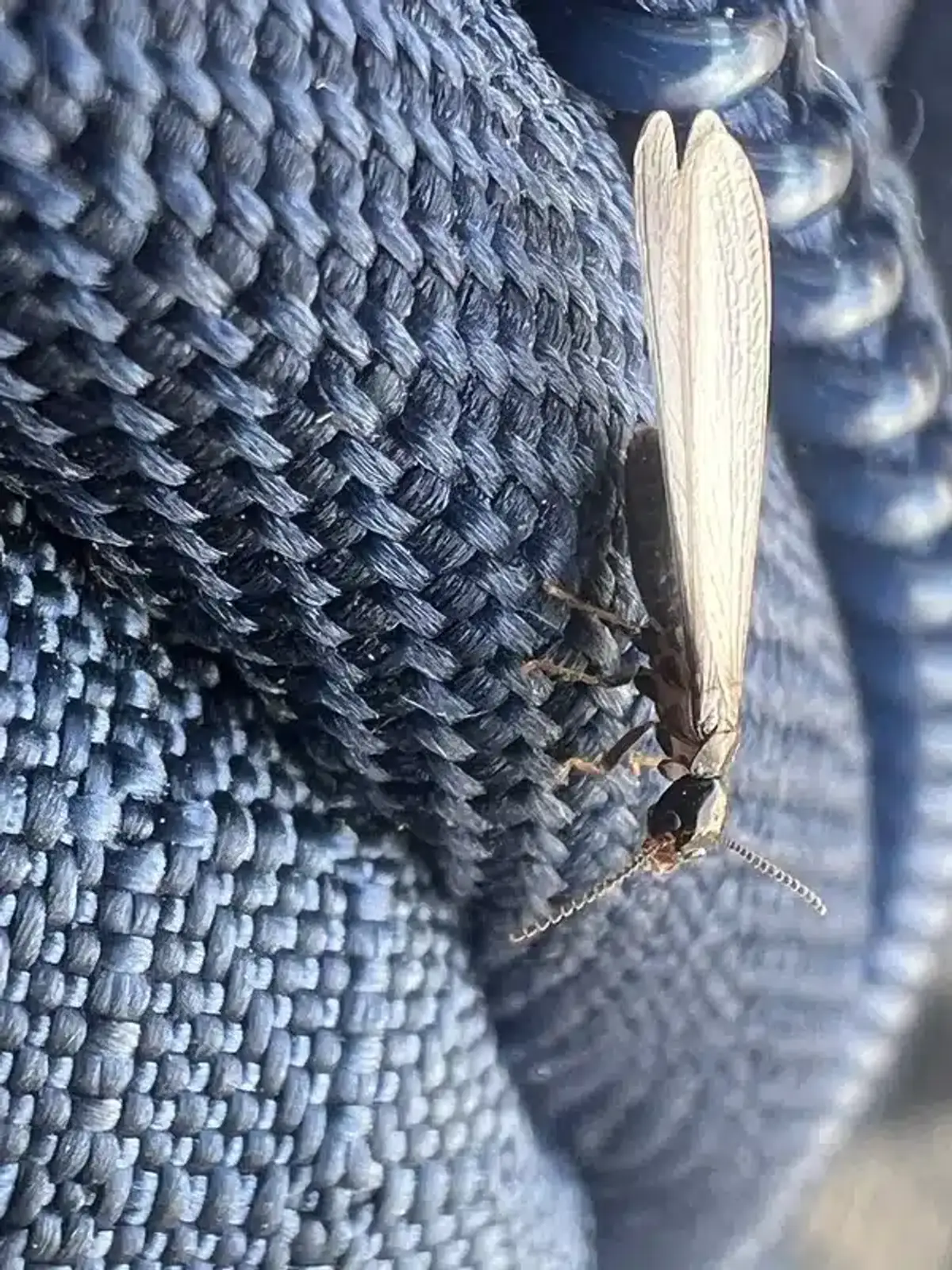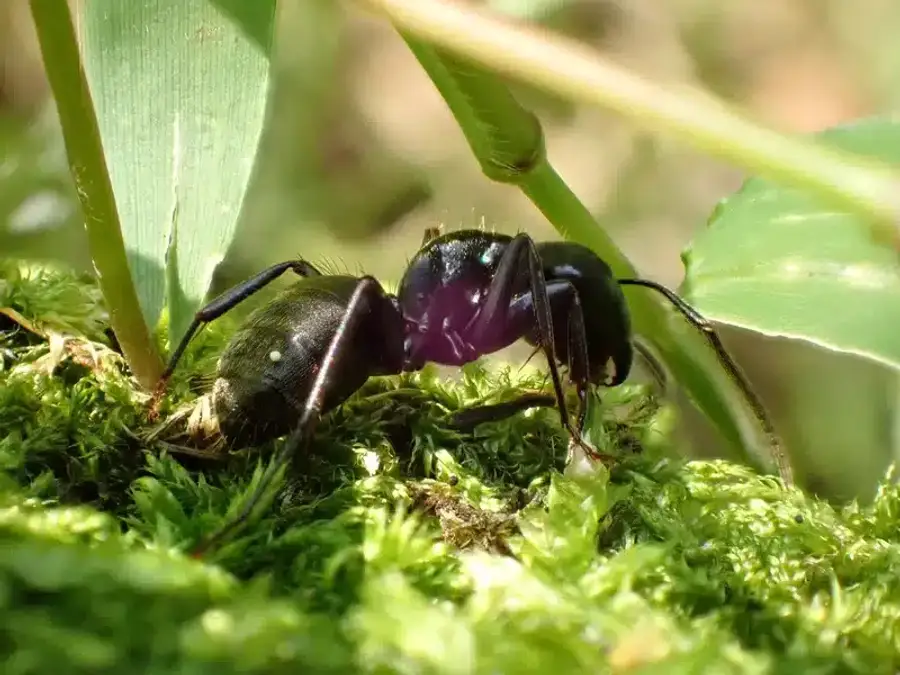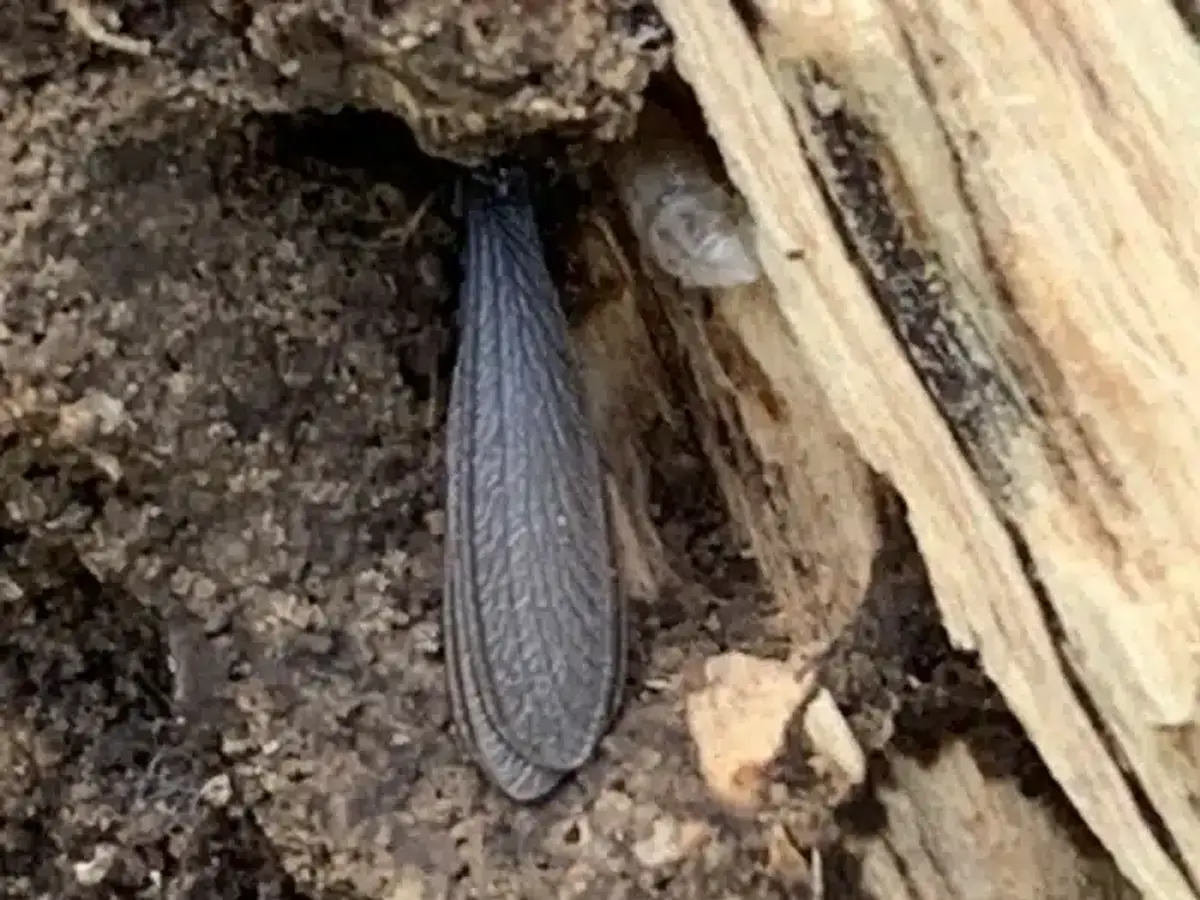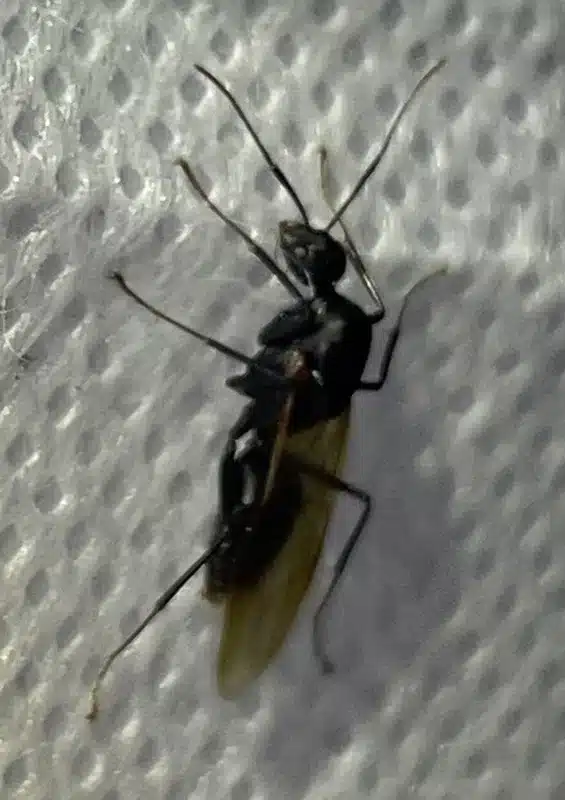When you see winged insects swarming around your home, it’s natural to wonder what you’re dealing with. Are they harmless flying ants or destructive termites? The answer matters more than you might think. Mistaking termites for ants can cost thousands in repairs that could have been prevented with early detection.
When a Small Bulge Revealed Major Damage
During my training in Alexandria, we responded to what seemed like a minor issue - homeowners noticed a small bulge in their window sill. What we discovered changed everything I thought I knew about termite activity and identification importance.
- Initial sign: A barely visible bulge in the window sill
- What we found: Termites had eaten right up to the paint layer
- Further investigation: Mud tunnels running up foundation walls in the crawl space
- Extent of damage: Years of hidden structural harm not visible from outside
This experience taught me why understanding proper identification and early detection are so critical for protecting your biggest investment.

This case really showed me how critical it is for homeowners to correctly identify winged insects. If someone had dismissed those termite swarmers as just ants, the damage could have gotten much worse. I’ve helped over 100 customers with termite-related issues, and I see misidentification happen more often than you’d think.
Physical Differences Between Flying Ants and Termites
The key differences between flying ants and termites are easier to spot than most people realize. Once you know what to look for, you can tell them apart quickly.
Body Shape: The Pinched Waist Test
The most obvious difference is the body shape. Ants have a distinct pinched waist that creates three clear body segments. Think of it like an hourglass figure - there’s a narrow connection between the thorax and abdomen.
Termites, on the other hand, have a straight body with no constriction. Their body looks more like a tube from head to tail. This difference is so reliable that it’s often the first thing pest control professionals check when identifying winged insects.
Wing Size and Attachment Differences
Flying ants and termites both have two pairs of wings, but the similarities end there. Ant wings are unequal in size - the front wings are noticeably larger than the back wings. The wings also have a brownish tint and remain firmly attached even after flight.

Termites have equal-sized wings that are typically clear and about twice the length of their body. More importantly, termite wings snap off easily at a pre-formed break line called the basal suture. This is why you’ll often find piles of discarded wings on windowsills after a termite swarm.
Wing Alert
Finding piles of shed wings indoors is a major red flag for termites. Termites drop their wings immediately after swarming, while ants keep theirs longer. Check windowsills and corners for wing accumulations.
Antennae Structure: Straight vs Elbowed
The antennae provide another reliable way to tell these insects apart. Ants have elbowed antennae with a distinct 90-degree bend, creating an L-shaped appearance. This bend is called the scape and it’s present in all ant species.
Termites have straight antennae that look like a string of beads. There’s no bend or elbow - just a series of small segments running in a straight line from the head. Under magnification, these segments have a uniform, rounded appearance.
Color and Size Identification Guide
Color can help you distinguish between different species, but it’s not always the most reliable indicator. Flying ants are typically black, brown, or reddish with a glossy appearance. Carpenter ants, which are commonly mistaken for termites, are usually large and black.
Termite swarmers are generally dark brown to black, but their workers (which you might see in the soil) are white to cream colored. The eastern subterranean termite, common in our area, has dark swarmers with smoky wings.


Size ranges can overlap between species, making it less useful for identification. Most winged ants measure 6-12 mm, while carpenter ants can exceed 15 mm. Termite swarmers typically range from 6-10 mm, similar to many ant species.
Flying Ants vs Termites: Key Differences
| Feature | Flying Ants | Termites |
|---|---|---|
| Body Shape | Pinched waist (hourglass) | Straight, tube-like |
| Antennae | Elbowed (L-shaped) | Straight (bead-like) |
| Wings | Unequal size, stay attached | Equal size, shed easily |
| Swarm Timing | Late May - August | Mid-March - Early May |
When and Why Swarms Occur
Understanding swarm timing can help you identify what you’re seeing. In Virginia, Maryland, and DC, termites typically swarm from mid-March through early May. These swarms happen on warm mornings (above 68°F) following rainfall.
Flying ants usually swarm later in the season, from late May through August. Ant swarms often occur at dusk after thunderstorms, while termite swarms prefer daylight hours. This timing difference can be a helpful clue when you’re trying to identify swarming insects.
Both flying ants and termites swarm for the same basic reason - reproduction. These winged reproductives leave their parent colonies to mate and establish new colonies elsewhere. The timing is triggered by environmental factors like temperature, humidity, and barometric pressure.
Indoor vs Outdoor Swarms
Where you find the swarm matters significantly. If swarmers are emerging from cracks in your foundation or basement walls, this strongly suggests an established colony inside your home’s structure. This scenario requires immediate attention, especially if the insects turn out to be termites.
Dead winged insects caught in spider webs near windows might indicate outdoor colonies attracted to indoor lights. While less concerning than interior emergence, it’s still worth monitoring and having the insects properly identified.
What Finding Winged Termites or Ants Indoors Means
Discovering winged insects inside your home can mean different things depending on the species and circumstances. If you find termite swarmers emerging from interior locations, it typically indicates an active termite infestation that’s been present for several years.
Finding flying ants indoors is generally less serious, but it can still indicate problems. Carpenter ants with wings might suggest moisture issues or wood damage that’s attracting the ants. While carpenter ants don’t eat wood like termites, they can still cause structural damage by hollowing out galleries.

The presence of shed wings is particularly telling. Termites lose their wings almost immediately after landing, so finding piles of wings suggests recent swarming activity. Ants typically keep their wings longer, so large accumulations of wings point more toward termites.
Immediate Steps When You Find Swarming Insects
When you discover swarming insects, your first step should be collecting specimens for proper identification. Don’t spray them with aerosol insecticide - this destroys the physical features needed for accurate identification.
Instead, collect 5-10 intact specimens in a small vial with rubbing alcohol. Include both winged and wingless insects if possible, as different castes can help with identification. Take clear photos next to a ruler for size reference.
Preservation and Documentation for Pest Control
Proper specimen collection is crucial for accurate identification. Use a clean vial with 70% isopropyl alcohol - even clear hand sanitizer works in a pinch. Package the vial in a rigid box to prevent crushing during transport.
Document the location where you found the insects, the date and time, and any environmental conditions like recent rain or temperature changes. This information helps pest control professionals understand the swarming behavior and identify the species.
What does the science say?
According to the University of Maryland Extension, detailed documentation of emergence locations is critical for accurate species identification. Their research shows that noting specific details about where insects emerged from (foundation cracks, soil contact points, etc.) significantly improves identification accuracy and helps professionals determine the extent of any potential infestation.
Why Flying Ant vs Termite Misidentification Can Be Costly
The financial stakes of proper identification are significant. Termite damage costs American homeowners billions annually, with individual repair bills often reaching thousands of dollars. Early detection and treatment can prevent this expensive damage.
Treating ants as termites wastes money on unnecessary termiticide treatments that can cost over $1,000. But the bigger risk is dismissing termites as “just ants” and allowing hidden damage to progress for years.

Unlike carpenter ants that primarily hollow out wood, termites actually consume cellulose and can compromise structural integrity. Workers feed continuously, often for years before homeowners notice any signs of termites. Most homeowner insurance policies exclude termite damage, making prevention even more critical.
That case in Alexandria I mentioned earlier could have been caught much sooner if the initial swarming had been properly identified. Instead, years of hidden feeding caused extensive damage that required major structural repairs.
Professional Identification and Treatment Options
While these identification tips are helpful, nothing replaces professional expertise when dealing with potential termite issues. Licensed technicians have the training and tools to make definitive identifications and assess the extent of any infestation.
For suspected termite activity, we offer comprehensive inspections that include checking for mud tubes, probing foundation soil, and examining crawl spaces for signs of termites. Our registered technicians know exactly where to look and what evidence indicates active colonies.
Treatment options vary significantly between ants and termites. Ant treatments typically focus on exterior perimeter applications and interior crack-and-crevice treatments using non-repellent materials. Termite treatment might involve soil applications, baiting systems like Sentricon, or more extensive curative treatments depending on the situation.
The Better Termite Approach
Our approach starts with proper identification through our detailed inspection process. We’ve developed protocols specifically for distinguishing between flying ants vs termites based on years of field experience in the DC metro area.
When we find termite activity, we explain all treatment options clearly, from proactive monitoring systems to comprehensive soil treatments. Our internal research team has eliminated 9 harsh chemicals commonly used in the industry, focusing on products we’d use in our own homes.
For ant issues, we use targeted approaches that address the root cause, not just the visible insects. This might include moisture control recommendations and exclusion techniques in addition to treatment applications.
Regional Considerations for Virginia, Maryland, and DC
Our local climate creates specific conditions that affect both ant and termite activity. The Mid-Atlantic region’s humidity and soil conditions are particularly favorable for eastern subterranean termites, making accurate identification even more critical.
What does the science say?
According to Penn State Extension, eastern subterranean termites show peak activity when soil temperatures reach 60-70°F, typically occurring in our Mid-Atlantic region during March through May. Their research demonstrates that these termites require specific moisture and temperature conditions to establish colonies, with spring soil warming triggering reproductive swarms and increased foraging activity near foundations.
Local soil conditions also influence ant behavior. Areas like Chantilly see heavy ant activity due to dark red soil that retains moisture near foundation walls. Understanding these regional patterns helps with both identification and prevention.
The timing of swarms in our area is fairly predictable. Termite swarms typically peak in April, while ant swarms are more common from June through August. However, indoor heating can trigger off-season termite swarms as early as February.
When you’re trying to tell the difference between these insects, remember that the physical differences to help distinguish them remain consistent regardless of location. The body shape, antennae structure, and wing characteristics don’t change based on geography.
If you’re seeing winged insects around your home, don’t wait to get them properly identified. Early detection can save thousands in potential repairs and give you peace of mind about your home’s structural integrity.
Frequently Asked Questions
How do I know if I have termites or flying ants?
+
Look at three key features: body shape (ants have a pinched waist, termites don't), antennae (ants have elbowed antennae, termites have straight ones), and wings (ant wings are unequal sizes, termite wings are equal). If you find piles of shed wings, this strongly suggests termites since they drop their wings immediately after swarming.
Are winged ants harmful?
+
Most winged ants are not directly harmful to humans, but some species like carpenter ants can damage wood structures by creating galleries. While they don't eat wood like termites, they can still cause structural issues over time. The main concern is often misidentifying them when they might actually be termites.
Why are flying ants suddenly appearing?
+
Flying ants typically swarm during reproductive flights, usually triggered by warm weather and humidity changes after rain. In our area, this commonly happens from late May through August. They're looking to mate and establish new colonies, which is completely natural behavior.
Are ants with wings the same as termites?
+
No, winged ants and termites are completely different insects. While both have wings during certain life stages, they belong to different insect orders and have distinct physical characteristics. The key differences include body shape, antennae structure, and wing size that make them easy to distinguish once you know what to look for.
What should I do if I find winged insects in my home?
+
First, collect several specimens in a vial with rubbing alcohol for identification. Don't spray them with insecticide as this destroys identifying features. Take photos and note where you found them, especially if they're emerging from cracks or foundation areas. Contact a pest control professional for proper identification, especially if you suspect termites.
When do termites swarm in Virginia and Maryland?
+
Termite swarms in our region typically occur from mid-March through early May, with peak activity in April. They prefer warm mornings (above 68°F) following rainfall. However, indoor swarms can happen as early as February in heated buildings, so timing isn't always a reliable indicator.
Can I treat winged ants and termites the same way?
+
No, ant and termite treatments are completely different. Ant treatments typically involve perimeter sprays and interior crack-and-crevice applications. Termite treatments require specialized soil applications, baiting systems, or more extensive curative treatments. Using the wrong treatment wastes money and doesn't solve the problem.
How much damage can termites cause compared to ants?
+
Termites cause significantly more damage than ants because they actually consume wood cellulose, weakening structural elements. Carpenter ants hollow out galleries but don't eat the wood itself. Termite damage can cost thousands in repairs and often isn't covered by homeowner's insurance, making early detection crucial.
With five years of hands-on experience in the pest control industry, George Schulz is a registered technician with the Virginia Pest Management Association and a proud third-generation professional in a family business that's been protecting homes for over 57 years. He manages and trains a team of service pros while also leading internal research efforts—recently spearheading a deep-dive review of thousands of documents on pest control materials to hand-pick the most kid and pet friendly, most effective solutions tailored specifically for homes in the DC metro area.
